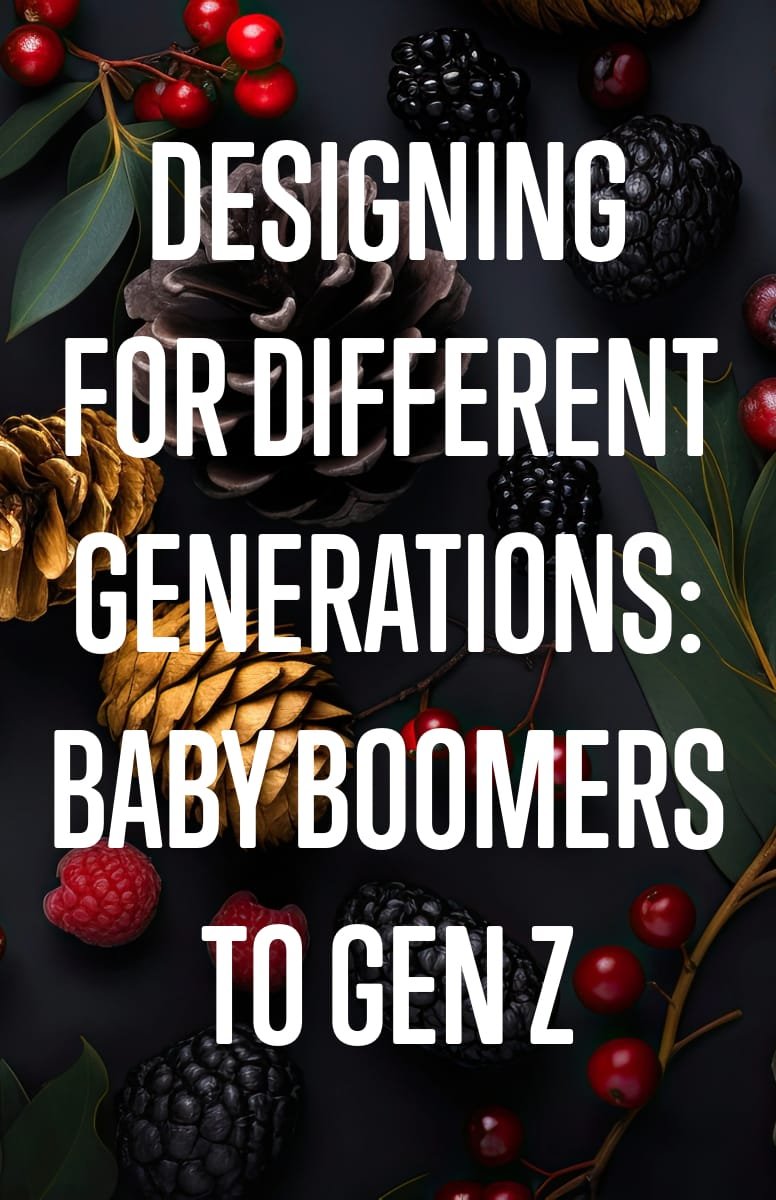
It’s easy to get caught up in the latest trends. While staying up-to-date is important, have you ever stopped to think about who your end-users are? One critical aspect often overlooked is generational differences. It’s not just about designing a sleek, modern website or graphic; it’s also about knowing who will interact with it.
This article aims to equip designers and marketers with actionable insights for creating digital experiences that appeal to a broad range of age groups: Baby Boomers, Gen X, Millennials, and Gen Z.
Let’s go!
The Importance of Generational Design
Why is it important to consider generational differences when you’re designing? Well, it’s generally observed that usage habits can vary widely among different age groups. For example, Baby Boomers may be more comfortable browsing the web on a desktop, while Millennials may prefer using their mobile devices for the same activity. These tendencies aren’t hard and fast rules, but they offer useful hints on how to tailor your design to meet the preferences of your specific audience.
Baby Boomers
Characteristics
Born between 1946 and 1964, Baby Boomers are often considered resistant to technology. But that’s a generational stereotype that doesn’t necessarily apply universally. In fact, many Baby Boomers are becoming increasingly tech-savvy.
Design Tips
- Larger Text Sizes: Baby Boomers might find smaller fonts challenging to read.
- Simple Navigation: Complex menus can be overwhelming. Stick with straightforward navigation systems.
- Clear CTAs: Use unmistakable call-to-action buttons that clearly state what will happen when clicked.
Case Study: AARP’s Website
Take a look at AARP’s website. It’s a masterclass in designing for Baby Boomers. Larger fonts, simple navigation, and clear CTAs make the website accessible and user-friendly for its target audience.
Generation X
Characteristics
Born between 1965 and 1980, Generation X is often considered the “middle child” between Baby Boomers and Millennials. They’re tech-savvy but not tech-native, making them a versatile group to design for.
Design Tips
- Interactive Features: Gen X appreciates technology and will engage with interactive elements.
- Straightforward CTAs: Clear, uncomplicated CTAs work well with this group.
- Quality Content: Gen X values detailed and trustworthy content.
Case Study: LinkedIn
LinkedIn’s professional atmosphere appeals to Gen X. Its interface is sophisticated yet straightforward, allowing for networking and skill-building without unnecessary frills.
Millennials
Characteristics
Millennials, born between 1981 and 1996, grew up during the rise of the internet and mobile technology. They are tech-native and are often multi-tasking across multiple devices.
Design Tips
- Mobile-First: Millennials are often on their phones; make sure your design is responsive.
- Social Media Integration: This generation loves to share, so make it easy for them.
- Quick Load Times: Millennials are known for short attention spans. A slow website will lose their interest quickly.
Case Study: Instagram
The highly visual nature of Instagram is perfect for Millennials. From the mobile-first design to quick load times and seamless social sharing, it checks all the boxes.
Generation Z
Characteristics
The youngest generation in our discussion, Gen Z was born between 1997 and 2012. They’ve never known a world without smartphones and are incredibly tech-savvy.
Design Tips
- Video Content: Gen Z consumes a lot of video; consider incorporating it into your design.
- Gamification: This generation loves interactive and competitive elements.
- Minimalistic Design: Less is more for Gen Z, who prefer sleek, uncluttered layouts.
Case Study: TikTok
TikTok has captured the essence of Gen Z with its video-centric interface, addictive content, and gamified features like challenges and duets.
Cross-Generational Design
Sometimes, your target audience will span across multiple generations. In such cases, focus on inclusive design principles, such as accessibility features and responsive design, to cater to the widest audience possible.
Conclusion
Designing for different generations requires more than just a keen eye for aesthetics. It’s about understanding the behavioral nuances of your target audience and implementing design strategies that cater to those specific needs. So, the next time you sit down to sketch out a design, think critically about who will be on the other side of the screen. Tailor your approach accordingly, and you’ll see not just higher engagement, but also more satisfied users.





